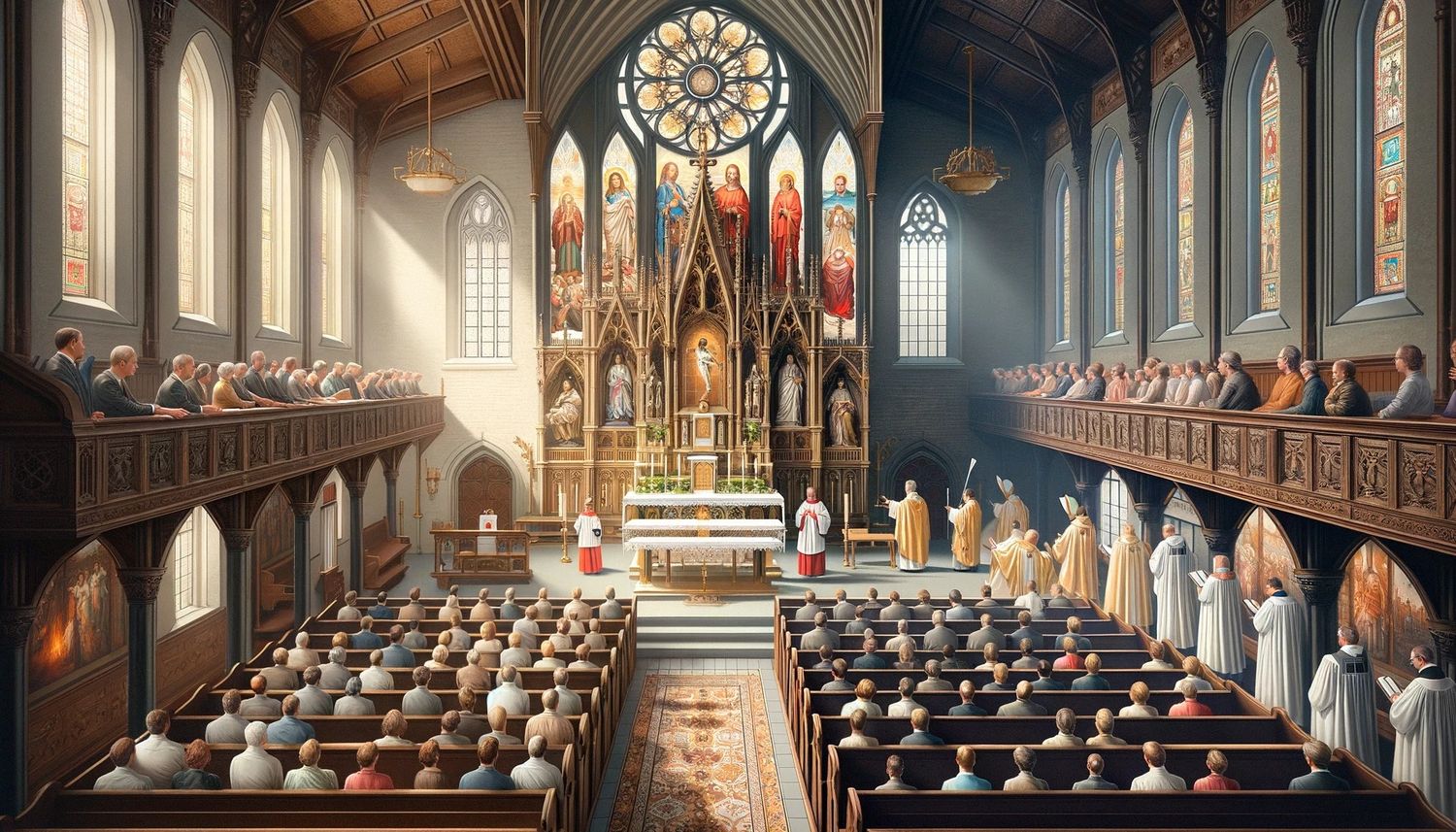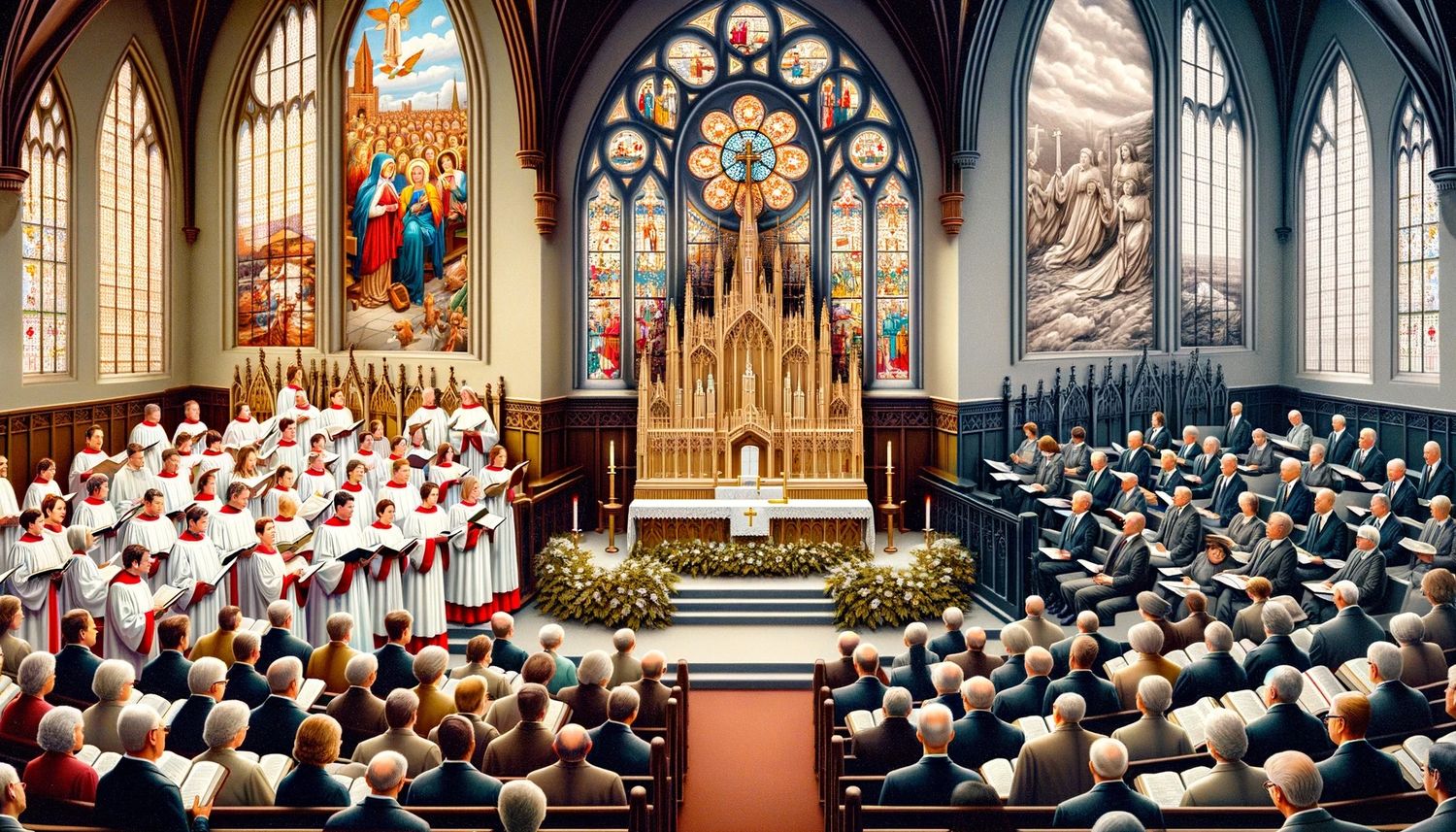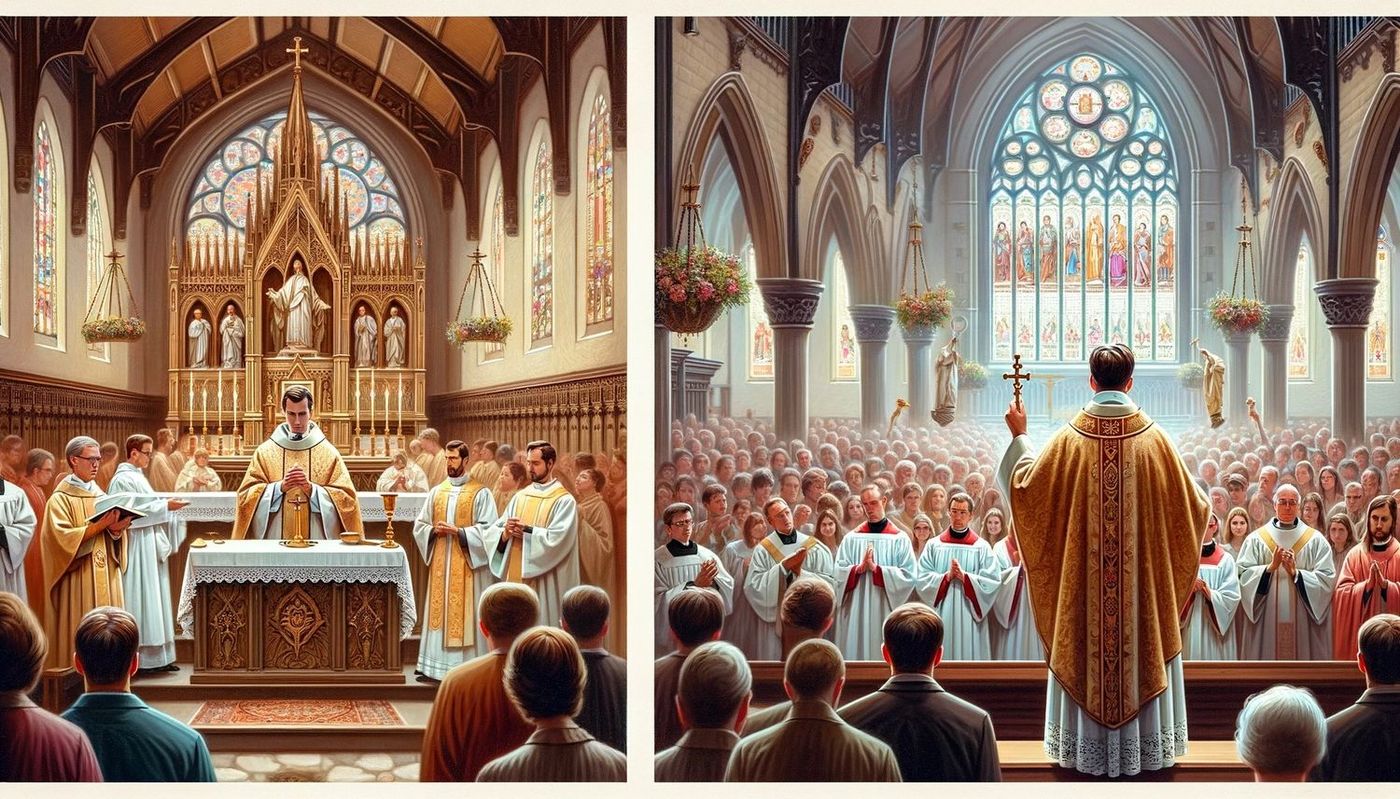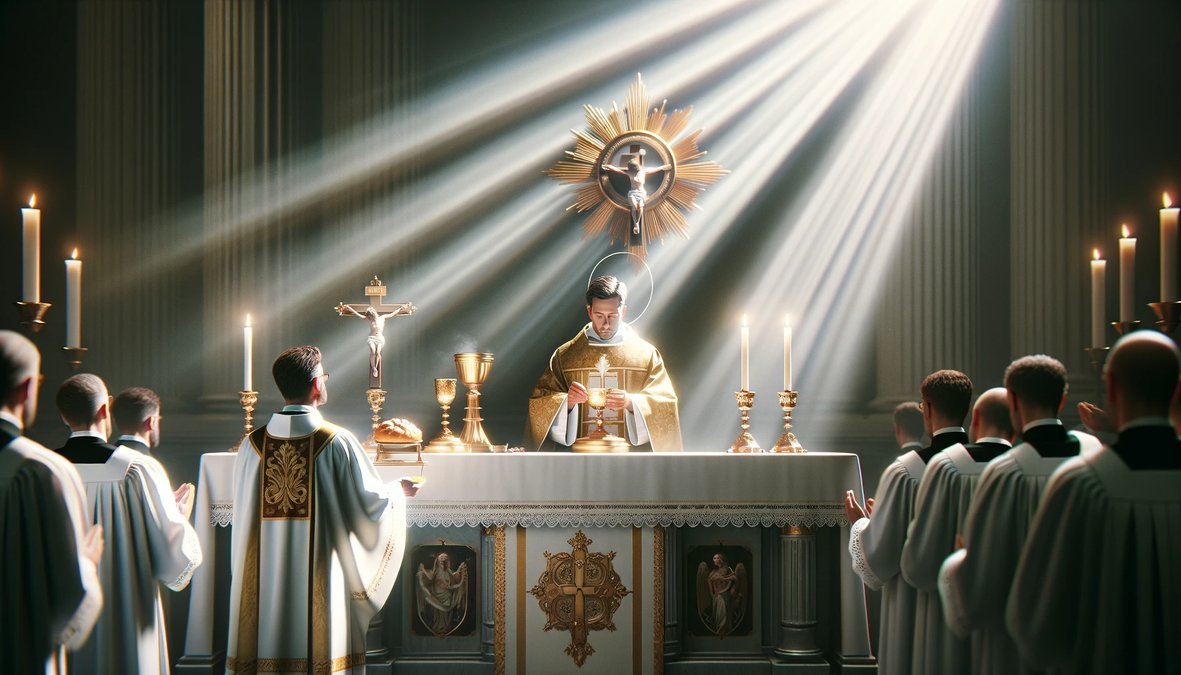Home>Theology and Spirituality>The Clearest Difference Between Lutheranism And Catholicism
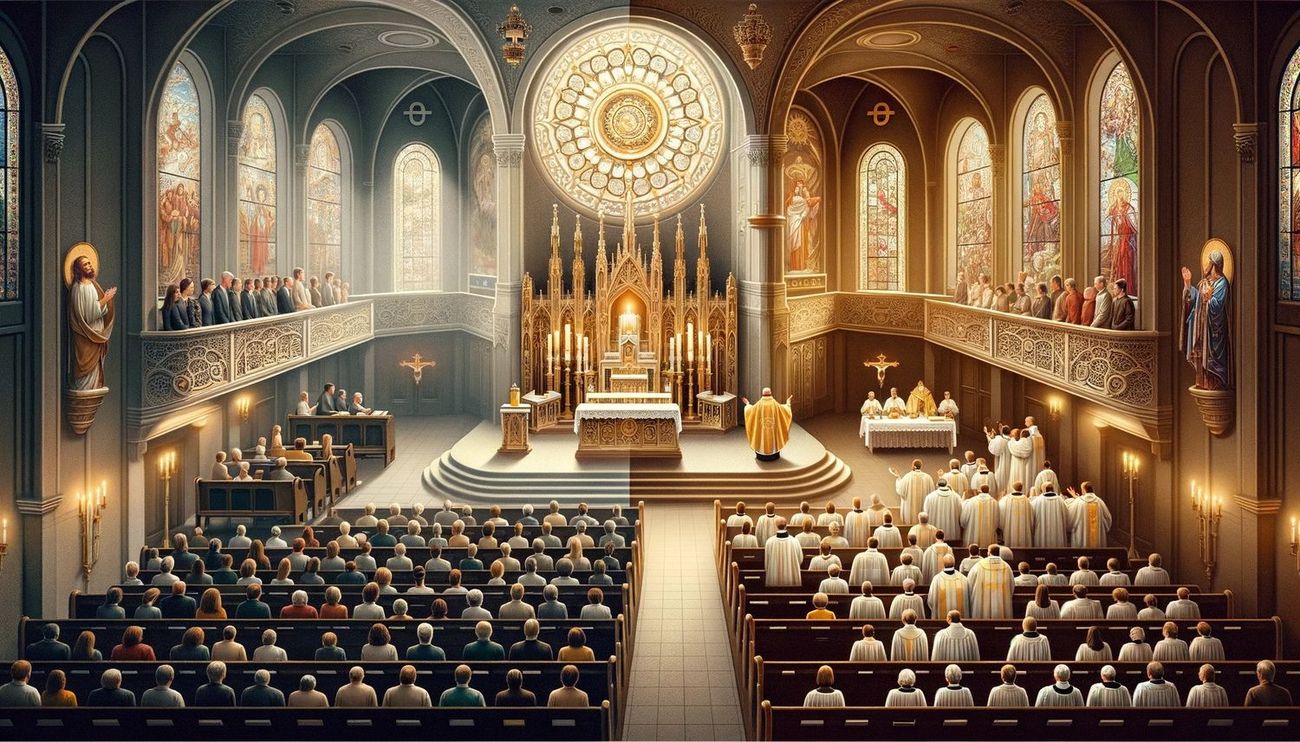

Theology and Spirituality
The Clearest Difference Between Lutheranism And Catholicism
Published: February 15, 2024
Peter Smith, Editorial Director at Christian.net, combines deep insights into faith, politics, and culture to lead content creation that resonates widely. Awarded for his contributions to religious discourse, he previously headed a major organization for religious communicators, enhancing dialogue on faith's societal impacts.
Discover the key distinctions between Lutheranism and Catholicism in terms of theology and spirituality. Explore the unique beliefs and practices that set these two faiths apart.
(Many of the links in this article redirect to a specific reviewed product. Your purchase of these products through affiliate links helps to generate commission for Christian.net, at no extra cost. Learn more)
Table of Contents
Introduction
When exploring the rich tapestry of Christian theology, one encounters a diverse array of denominations, each with its own distinct beliefs and practices. Among these, Lutheranism and Catholicism stand as two prominent branches, each with a unique historical and theological heritage. Understanding the differences between Lutheranism and Catholicism is essential for gaining insight into the nuances of Christian faith and practice.
Throughout history, these two traditions have played pivotal roles in shaping the religious landscape of the Western world. From the Protestant Reformation to the Council of Trent, the divergences between Lutheranism and Catholicism have sparked theological debates, social movements, and cultural shifts. By delving into their contrasting perspectives on authority, sacraments, salvation, and more, we can unravel the intricate theological tapestry that distinguishes these two traditions.
In this article, we will embark on a journey to explore the clearest differences between Lutheranism and Catholicism. By examining their historical backgrounds, core beliefs, and foundational practices, we aim to shed light on the distinct theological paradigms that define these two branches of Christianity. Through this exploration, we will gain a deeper understanding of the theological nuances that have shaped the identities of Lutheranism and Catholicism, illuminating the diverse expressions of Christian faith that continue to inspire and challenge believers around the world.
Historical Background
The historical roots of Lutheranism and Catholicism trace back to pivotal moments in Christian history, shaping their distinct trajectories and theological frameworks. The emergence of Lutheranism can be attributed to the Protestant Reformation, a transformative movement ignited by Martin Luther in the 16th century. Luther, a German monk and theologian, challenged various teachings and practices of the Roman Catholic Church, sparking widespread debate and dissent. His famous Ninety-Five Theses, posted in 1517, served as a catalyst for the Reformation, calling into question the sale of indulgences and advocating for a return to the primacy of scripture.
In response to Luther's criticisms, the Catholic Church convened the Council of Trent (1545-1563), a defining event that solidified the Church's stance on key doctrinal issues and initiated the Counter-Reformation. The Council addressed theological controversies, reaffirmed traditional Catholic teachings, and implemented reforms to counter the spread of Protestantism. This historical backdrop set the stage for the enduring schism between Lutheranism and Catholicism, marking a pivotal juncture in Christian history.
Lutheranism, with its emphasis on sola scriptura (scripture alone) and justification by faith, diverged from the sacramental and hierarchical structure of Catholicism. The Lutheran tradition sought to reform and purify the Church, advocating for a return to the core tenets of Christianity as articulated in the Bible. This departure from Catholic authority and doctrine led to the establishment of distinct theological traditions, ecclesiastical structures, and liturgical practices within the Lutheran faith.
On the other hand, Catholicism, with its deep historical roots in the early Christian Church and the papal authority centered in Rome, continued to uphold the sacramental system, veneration of saints, and the magisterial teaching authority of the Church. The Council of Trent reaffirmed these traditional Catholic teachings and practices, solidifying the doctrinal differences between Catholicism and the emerging Protestant traditions, including Lutheranism.
The historical backdrop of the Protestant Reformation and the Council of Trent serves as a crucial lens through which to understand the divergent paths of Lutheranism and Catholicism. These formative events not only shaped the theological contours of these traditions but also left an indelible mark on the broader landscape of Western Christianity, influencing religious, cultural, and social developments for centuries to come.
Beliefs and Practices
The theological distinctions between Lutheranism and Catholicism are vividly manifested in their core beliefs and foundational practices. These differences encompass doctrinal interpretations, liturgical expressions, and spiritual emphases, reflecting the diverse theological paradigms that define each tradition.
Lutheranism:
Lutheranism, stemming from the teachings of Martin Luther, emphasizes the primacy of scripture and the doctrine of justification by faith alone. This pivotal doctrine asserts that individuals are justified before God through faith in Jesus Christ, apart from any merit or works of their own. This emphasis on grace as the sole means of salvation underscores the Lutheran understanding of humanity's dependence on God's unmerited favor for redemption.
In terms of liturgical practices, Lutheranism exhibits a rich tradition of hymnody and congregational singing, reflecting its commitment to the participation of the laity in worship. The Lutheran liturgy often centers on the proclamation of the Word and the celebration of the sacraments, particularly Holy Communion, which is regarded as a means of encountering the real presence of Christ.
Catholicism:
In contrast, Catholicism places a strong emphasis on the sacramental system, viewing the sacraments as efficacious signs of grace instituted by Christ. The seven sacraments, including baptism, confirmation, Eucharist, reconciliation, anointing of the sick, holy orders, and matrimony, play a central role in the Catholic understanding of spiritual life and salvation. The Eucharist, in particular, holds a central place in Catholic worship, as the Church teaches the doctrine of transubstantiation, affirming the real presence of Christ in the consecrated elements.
Catholic liturgical practices are characterized by a rich tapestry of ritual, symbolism, and sacred art, reflecting the Church's emphasis on the continuity of tradition and the communal dimension of worship. The celebration of Mass, with its intricate liturgical rites and the veneration of saints and relics, embodies the sacramental and communal dimensions of Catholic worship.
Distinctive Emphases:
These contrasting emphases on justification by faith and the sacramental system encapsulate the theological divergence between Lutheranism and Catholicism. While Lutheranism underscores the individual's direct access to God through faith and the proclamation of the Word, Catholicism emphasizes the mediating role of the Church and the sacraments in facilitating encounters with divine grace.
The beliefs and practices of Lutheranism and Catholicism reflect the theological legacies of the Protestant Reformation and the Council of Trent, embodying the enduring theological tensions and divergences that have shaped the identities of these two Christian traditions.
Authority and Leadership
The divergent perspectives on authority and leadership constitute a fundamental point of contrast between Lutheranism and Catholicism, reflecting their respective approaches to ecclesiastical governance and theological interpretation.
Lutheranism:
In Lutheranism, the concept of authority is anchored in the priesthood of all believers, a foundational tenet that underscores the direct access of every Christian to God without the need for an intermediary. This principle, articulated by Martin Luther, emphasizes the spiritual equality of all believers and the universal priesthood that transcends hierarchical distinctions. Consequently, Lutheranism advocates for a decentralized model of church governance, wherein congregations and synods exercise a significant degree of autonomy in matters of doctrine and administration.
Furthermore, Lutheranism places a strong emphasis on the authority of scripture as the ultimate source of divine revelation and theological authority. The principle of sola scriptura (scripture alone) asserts the primacy of the Bible as the sole norm for faith and practice, guiding the interpretation of doctrine and shaping the ecclesiastical structures within the Lutheran tradition.
Catholicism:
In contrast, Catholicism upholds a hierarchical model of authority, characterized by the papal primacy and the magisterial teaching office of the Church. The doctrine of apostolic succession, which traces the lineage of bishops back to the apostles, underpins the Catholic understanding of ecclesiastical authority, affirming the continuity of divine commission and leadership within the Church.
The papal authority, centered in the Bishop of Rome, serves as the focal point of unity and doctrinal authority within Catholicism. The pope, regarded as the successor of St. Peter, is vested with the authority to define and interpret matters of faith and morals, reflecting the Catholic belief in the divine institution of the papal office.
Distinctive Perspectives:
These divergent perspectives on authority and leadership encapsulate the contrasting paradigms of ecclesiastical governance within Lutheranism and Catholicism. While Lutheranism emphasizes the priesthood of all believers and the authority of scripture, Catholicism upholds a centralized model of authority, centered in the papal office and the magisterium.
The nuanced interplay of authority, leadership, and theological interpretation underscores the enduring theological tensions that distinguish Lutheranism and Catholicism, shaping their ecclesiastical structures and doctrinal frameworks.
This detailed exploration of the differences in authority and leadership illuminates the diverse theological paradigms that define Lutheranism and Catholicism, offering valuable insights into the distinct approaches to ecclesiastical governance and theological authority within these two Christian traditions.
Sacraments
The theological perspectives on sacraments serve as a focal point of divergence between Lutheranism and Catholicism, encapsulating their distinct understandings of the sacred rites and their efficacy in the spiritual life of believers.
Lutheranism:
In Lutheranism, the sacraments are viewed as sacred acts instituted by Christ, conveying God's grace and fostering the believer's faith. Martin Luther affirmed the presence of two sacraments, Baptism and the Eucharist, as essential components of Christian worship and spiritual nourishment. Baptism, regarded as a means of regeneration and incorporation into the body of Christ, symbolizes the cleansing of sin and the bestowal of the Holy Spirit. The Eucharist, also known as the Lord's Supper, is celebrated as a commemoration of Christ's sacrificial death and a means of encountering His real presence in the elements of bread and wine.
Lutheran theology emphasizes the concept of "means of grace," wherein the sacraments serve as visible signs of God's invisible grace, strengthening the believer's faith and assurance of salvation. The efficacy of the sacraments is grounded in the promise of God's word, as the visible elements convey the spiritual reality of God's redemptive work. This sacramental understanding underscores the centrality of God's action in the sacraments, emphasizing the reception of divine grace through faith in Christ.
Catholicism:
In Catholic theology, the sacraments are regarded as efficacious signs of grace, conveying the transformative presence of Christ in the life of the believer. The Catholic Church recognizes seven sacraments, including Baptism, Confirmation, Eucharist, Reconciliation, Anointing of the Sick, Holy Orders, and Matrimony, each embodying distinct dimensions of spiritual initiation, healing, and vocation. The sacraments are viewed as channels of divine grace, imparting sanctifying grace and actualizing the spiritual realities they signify.
Central to Catholic sacramental theology is the doctrine of transubstantiation, which affirms the real presence of Christ in the Eucharistic elements. Through the consecration by a validly ordained priest, the bread and wine are believed to undergo a substantial change, becoming the body and blood of Christ while retaining their outward appearance. This profound sacramental mystery underscores the intimate union between the earthly and the divine, inviting believers to partake in the sacred banquet of Christ's presence.
Distinctive Emphases:
The contrasting perspectives on the sacraments encapsulate the theological nuances that distinguish Lutheranism and Catholicism. While Lutheranism emphasizes the sacraments as means of grace and visible signs of God's redemptive action, Catholicism underscores the sacraments as efficacious channels of divine grace, conveying the transformative presence of Christ in the life of the believer.
The beliefs and practices surrounding the sacraments reflect the theological legacies of the Protestant Reformation and the Council of Trent, embodying the enduring theological tensions and divergences that have shaped the identities of these two Christian traditions.
Salvation and Justification
Salvation and justification stand as pivotal theological concepts that delineate the divergent perspectives of Lutheranism and Catholicism, illuminating their distinct understandings of the redemptive process and the relationship between faith and works.
Lutheranism:
In Lutheranism, the doctrine of justification by faith alone occupies a central position, embodying the foundational principle articulated by Martin Luther during the Protestant Reformation. This doctrine asserts that individuals are justified before God solely through faith in Jesus Christ, apart from any merit or works of their own. Luther emphasized the primacy of grace as the sole means of salvation, underscoring humanity's dependence on God's unmerited favor for redemption. This emphasis on grace as the linchpin of salvation underscores the Lutheran understanding of the radical nature of God's redemptive action, which transcends human efforts and achievements.
Furthermore, Lutheranism accentuates the assurance of salvation grounded in the unchanging promise of God's grace. The believer's confidence in salvation rests not on personal merits or righteous deeds but on the unwavering trust in the atoning work of Christ. This emphasis on the certainty of salvation through faith engenders a profound sense of spiritual freedom and assurance, as believers rest in the unshakable foundation of God's grace.
Catholicism:
In contrast, Catholic theology espouses a synergistic understanding of salvation, wherein the cooperative synergy between faith and works plays a vital role in the process of justification. While affirming the centrality of faith in God's redemptive plan, Catholicism emphasizes the significance of meritorious works and cooperation with divine grace in the pursuit of salvation. The Catholic Church teaches that justification involves a transformative process wherein believers, empowered by grace, actively participate in the cultivation of virtues and the performance of good works as manifestations of their faith.
Moreover, Catholic theology underscores the sacramental dimension of salvation, wherein the reception of the sacraments, particularly through the rite of penance and reconciliation, contributes to the ongoing process of justification and spiritual renewal. The sacraments are viewed as efficacious channels of divine grace, imparting sanctifying grace and nurturing the believer's journey toward holiness.
Distinctive Emphases:
The contrasting perspectives on salvation and justification encapsulate the theological nuances that distinguish Lutheranism and Catholicism. While Lutheranism underscores the primacy of faith and grace in the redemptive process, Catholicism emphasizes the cooperative synergy between faith, works, and sacramental participation in the pursuit of salvation.
The beliefs and practices surrounding salvation and justification reflect the enduring theological tensions and divergences that have shaped the identities of these two Christian traditions, offering profound insights into the diverse theological paradigms that continue to inspire and challenge believers around the world.
Conclusion
In conclusion, the clearest differences between Lutheranism and Catholicism encompass a rich tapestry of historical, theological, and ecclesiastical distinctions that have shaped the identities of these two prominent branches of Christianity. The historical backdrop of the Protestant Reformation and the Council of Trent serves as a crucial lens through which to understand the divergent paths of Lutheranism and Catholicism, marking a pivotal juncture in Christian history that continues to reverberate in contemporary theological discourse.
The theological nuances that delineate Lutheranism and Catholicism are vividly manifested in their core beliefs, foundational practices, perspectives on authority and leadership, sacramental theology, and understandings of salvation and justification. Lutheranism, stemming from the teachings of Martin Luther, emphasizes the primacy of scripture, justification by faith alone, and the priesthood of all believers, reflecting a decentralized model of ecclesiastical governance and a sacramental theology centered on the means of grace. In contrast, Catholicism upholds a hierarchical model of authority, the sacramental system, and a synergistic understanding of salvation that emphasizes the cooperative synergy between faith, works, and sacramental participation.
These distinctive theological paradigms not only reflect the enduring legacy of the Protestant Reformation and the Council of Trent but also embody the diverse expressions of Christian faith that continue to inspire and challenge believers around the world. The beliefs and practices of Lutheranism and Catholicism serve as a testament to the enduring theological tensions and divergences that have shaped the identities of these two Christian traditions, offering profound insights into the rich tapestry of Christian theology and spirituality.
By delving into the clearest differences between Lutheranism and Catholicism, we gain a deeper understanding of the theological nuances that define these two traditions, illuminating the diverse expressions of Christian faith that continue to inspire and challenge believers around the world. This exploration serves as a testament to the enduring theological tensions and divergences that have shaped the identities of Lutheranism and Catholicism, offering valuable insights into the diverse theological paradigms that continue to shape the landscape of Western Christianity.
